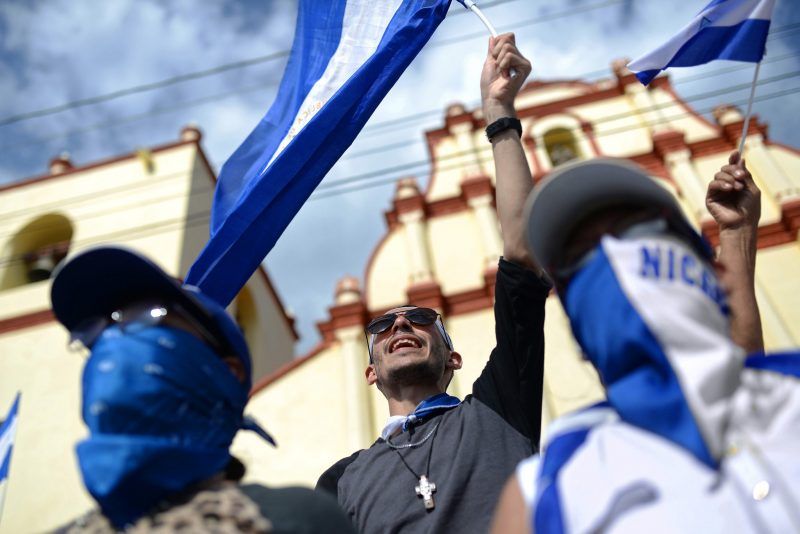
I will always remember where I was on July 19, 1979. Six months earlier, my mom and I had arrived in the United States, fleeing the violence of the Somoza regime in Nicaragua. I was 8 years old. It was a beautiful summer day in San Francisco. My friends and I were skateboarding on the courtyard of our apartment complex when my friend’s mom came out and said: “Somoza is gone.”
I was 9 years old when we returned to Nicaragua. Everything was different. You could still see the war scars in the town I was from. A whole city block was gone after Somoza’s aircraft bombed it. It was never rebuilt. We called it “la manzana bombardeada,” or the bombed city block, and used it as a landmark for directions. Yet despite the destruction, there was a feeling of excitement, of possibility, of freedom.
The revolution ushered in a brief period of social and economic reforms. In 1980, the Sandinista government started the National Literacy Crusade with the objective to wipe out illiteracy in the country. Between March and August, thousands of Nicaraguan volunteers went to the rural areas to teach people how to read and write. My mom was one of those volunteers. A college-educated teacher with years of experience, she oversaw a team of teachers. I would visit her on weekends, as she had been posted to a town that was only about an hour away by bus from where we lived. I’d tag along on her supervisory rounds, and I learned to appreciate what she was doing, and how important it was.
My mom became wary of Sandinismo soon after the Literacy Crusade. While she felt the initial surge of enthusiasm, there were red flags early on.
First was the book purge, where the books written in English were taken out of her school library and burned because English was considered to be the language of the imperialist. Then there were the attacks on the Catholic Church and the priests, which my mom, as a Catholic, could not abide. Finally, one day I came home from school and told her how a young woman from the Sandinista Children’s Association had visited our classroom to invite us to join. She had made it sound appealing, like joining the Girl Scouts. She told us that it would be our duty to be vigilant and report any counterrevolutionary talk, even by our parents. “That’s what a good Sandinista child does.”
My mom forbade me from joining. She said, “In this family, we do not spy on our neighbors, our family or our friends.”
It’s been 39 years since the triumph of the revolution. Daniel Ortega, the erstwhile revolutionary symbol, has instituted a new dictatorship in Nicaragua. Mr. Ortega controls all four branches of government. He is the de facto head of the police. He has an elaborate propaganda apparatus at his fingertips, and that apparatus has been very successful in painting the image of Nicaragua as “the safest country in Central America.” That depends, however, on how one defines “safe.”
I am now 47, and I find myself in a familiar situation. I am, again, abroad while my homeland is in chaos.
Tensions erupted into violence on April 19, following a violent crackdown on a student-led protest in Managua against proposed social security cuts. The latest report by the Nicaraguan Pro-Human Rights Association indicates that 448 people have died since April. Most of the dead are civilians and protesters, and the death toll rises every day, with no peaceful solution in sight.
But the events in Nicaragua aren’t happening in a vacuum. According to Amnesty International’s latest annual report, violence against women has become increasingly brutal, attacks against human rights defenders persist and violent crimes perpetrated against indigenous communities go unpunished. In other words, those groups do not live in “the safest country in Central America.”
Unfortunately, the amount of coverage that Nicaragua has received in the English-language press has ebbed more than flowed. A 2011 report by the American Journalism Review found that the number of foreign correspondents covering international news for United States newspapers had “decreased markedly” since at least 2003. Columbia Journalism Review reported that “journalists who don’t leave the office are daily contributors to the foreign report.” With many news organizations relying on wire services for reports, coverage of the crisis is often reduced to lists, with titles like “5 Things to Know About the Protests in Nicaragua.”
Thousands have already fled the mounting political violence. According to Costa Rican authorities, nearly 8,000 asylum claims by Nicaraguans have been registered since April. As the situation worsens, many more will no doubt flee, potentially creating a refugee crisis that can spread beyond Central America, maybe even to the United States, as happened in the 1980s. To make matters worse, the Trump administration has decided to terminate the temporary protected status program for Nicaraguans on Jan. 5. What will become of the approximately 2,500 individuals forced to return to a country teetering on the edge of a civil war?
The media must shed light on the systematic violation of human rights and abuses Nicaragua’s citizens are enduring at the hands of the Ortega administration, if only to provide a counterpoint to the regime’s lies, denials and failure to govern and protect all of its citizens. Nicaraguans live in a country where the president and vice president routinely accuse their opposition of attempting a coup while referring to paramilitary groups as “volunteer police officers.” This is a country where heavily armed Ortega supporters kidnap people from their homes, and where doctors are fired from public hospitals for providing medical care to wounded protesters.
Make no mistake, this is a human rights crisis, and it is at our doorstep. Mr. Ortega’s regime must be exposed for what it really is: a return to a dictatorship.
Cynara M. Medina is an adjunct instructor of communication at Western Nevada College, in Carson City.
